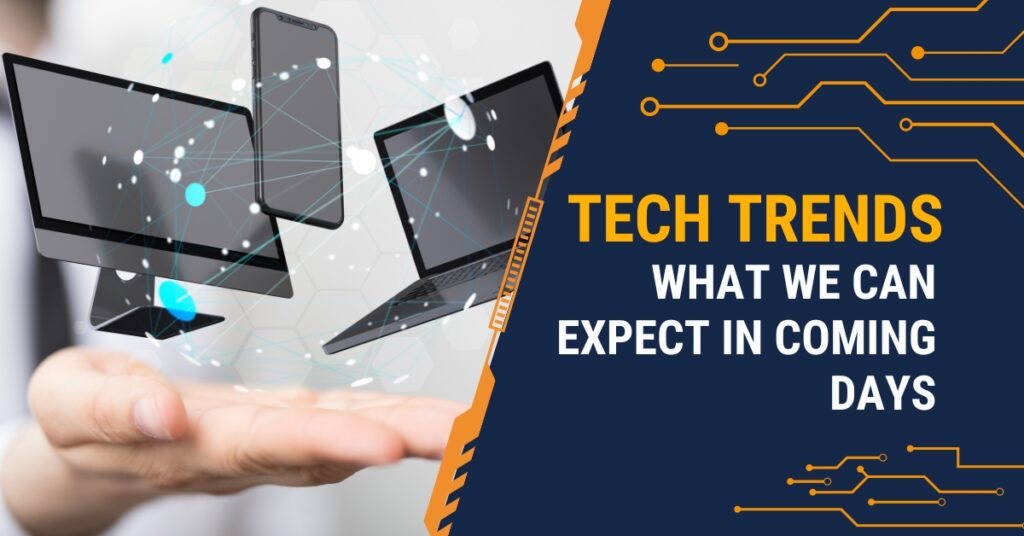The future is unpredictable. When it comes to the IT industry, changes in technology, and limitless challenges, future prediction is a big task. Though out of many innovations some are not practical, cost-effective or marketable, many are in the market and are reaching their peak in terms of their use. Even small changes in it make a remarkable effect on the industry. Some technologies are either not adopted or are not launched as others take over the market on time.
According to a survey titled IEEE CS 2022, 23 technologies could change the scenario of computer science and related industries. The focus areas are 3D printing, big data and analytics, intellectual property movement, online open courses, security cross-cutting issues, universal memory, 3D integrated circuits, photonics, cloud computing, computational biology and bioinformatics, device and nanotechnology, sustainability, high-performance computing, the Internet of Things, life sciences, machine learning, and intelligent systems, natural user interfaces, networking and inter-connectivity, quantum computing, software-defined networks, multicore, and robotics for medical care
Future technologies in Tech:
- Security Cross-Cutting Issues: With the emergence of data analytics there is a growth of huge repositories of data. Leading to an increase in the chances of intrusions of these data. There is a need to balance security with privacy.
- Open Intellectual Property Movement: From open source software to creation and management of the intellectual property. We need to identify its implications.
- Sustainability: With the advent of EVs, LED lighting, new types of chips and batteries and a focus on renewable sources of energy will bring a lot of changes in computing.
- Massively online Open Courses: digital transformation of higher education from traditional Universities to MOOCs plays a significant role in impacting technological innovations.
- Quantum Computing: Technological development is at an accelerated pace as commercial quantum computing is within reach.
- Device and Nanotechnology: the use of Micro-Electromechanical(MEMs) and nanoparticles are full-fledged used. Nanotechnology is further used in the manufacture of sunscreen, tyres, and even medical devices that can be swallowed.
- 3D integrated circuits: 3D-integrated circuits(ICs) are already being used in the mobile divisions which can spread across the entire IT division.
- Universal Memory: Universal memory replacements for DRAM will bring groundbreaking innovations in software architecture.
- Multicore: We will find multicore everywhere. From wearable systems and smartphones to cameras, games, automobiles, cloud servers, and many more.
- Networking and Interconnectivity: Research work on network stacks and the internet economy is an ongoing process at all levels.
- Software-Defined Network(SDN): SDNs are used to make any network more transparent, secure, flexible, and functional.
- High-Performance Computing: HPCs will move to the cloud to achieve better results.
- Cloud Computing: more computing workloads will increase in the cloud in near future.
- The internet of Things: IOTs are everywhere, from clothing to smartphones. The only concern is privacy and convenience in exchanging data over the internet.
- Natural User Interfaces: with more radical interfaces on the horizon, computers are already interfacing with humans through touch, gestures, and speech.
- 3D Printing: 3D Technology has increased the variety of revolutionary designs economically.
- Photonics: In the fabric of high-end systems silicon photonics is a fundamental technology to focus on the bandwidth, latency, and energy challenges.
- Big data and analytics: The availability of vast data and the tools to analyze those data have improved many data-driven decisions.
- Machine learning and intelligent systems: Machine learning is helping in ranking search results, recommending products, and even building models for a better environment.
- Computer Vision and pattern recognition: Unlocking the information of pictures and videos impacts the consumer in a better way.
- Life Sciences: Whether improving human and animal health or addressing threats to the environment, technology is playing a pivotal role.
- Computational Biology and Bioinformatics: the vast amount of available data on human health helps in computing the mysteries of life.
- Medical Robotics: The health industry has seen various life-saving innovations. From autonomous deliveries of medical supplies to advanced prostheses.
Factors that drive innovation are:
- Training
- Support from the industry.
- Pay scales
- Perceived usefulness
- Personal innovativeness
- Experience of the past
- Enjoyment with innovation
- Social Networks.
- Labor market
- Regulations
- Competitiveness
- Knowledge supply
- Internet connectivity
- Pace of knowledge transfer
Factors that Disrupts innovation are:
- Lack of leadership
- Short term thinking
- Lack of resources
- Lack of collaboration
- Lack of ideas and focused mindset
- Changes in education structure
- Use of robots as labour source
Seamless Intelligence will drive the tech innovations
Computing devices like chips embedded under the skin, computers, mobile devices, laptops, desktops, home servers, TV sets, refrigerators, the internet cloud will together be an intelligent computing and communication ecosystem with the information gathered from human’s fingertips, eyes, ears, and other senses or even directly from our interfaced brain waves.
Transparent and uninterrupted transitions and exchanges between devices are made possible using Bluetooth, Wi-Fi, intelligent coordinated software, identity technologies, and cloud-based APIs.
Through the combination of voice and facial recognition, identity databases may lead to a loss of privacy that requires new norms.
Available technological possibilities result in innovations utilising human and financial resources into useful products and processes, and sustaining the requisite activities.Technological innovations are definitely necessary as it comes with lots of economical benefits along with raising the standard of living.
